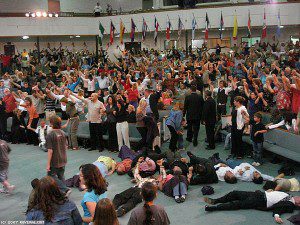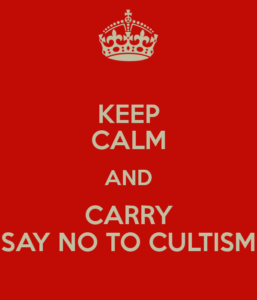 The Church Times on Friday 4th August had an article about the issue of social class in the Church of England. Class is one of those topics that probably everyone secretly has feelings about but finds difficult to discuss. The authors were brave to raise this issue in the new book, A Church for the Poor. It raises dilemmas that seem insoluble. A central starting point for the authors of the book, Natalie Williams and Martin Charlesworth, is that the Church of England is at present culturally very middle-class. People brought up in a different background often find themselves out of place in many of its typical activities, including the acts of worship. The book also faces up to the practical problems that arise when a middle-class congregation tries to be more accessible to people of a different social background. Many individuals from a humble background lack the education and a facility with words which is the norm among most church attenders. There are other topics in the book about working class representation in the structures of church government and leadership. Also, what might a successful church operating in a working-class environment look like?
The Church Times on Friday 4th August had an article about the issue of social class in the Church of England. Class is one of those topics that probably everyone secretly has feelings about but finds difficult to discuss. The authors were brave to raise this issue in the new book, A Church for the Poor. It raises dilemmas that seem insoluble. A central starting point for the authors of the book, Natalie Williams and Martin Charlesworth, is that the Church of England is at present culturally very middle-class. People brought up in a different background often find themselves out of place in many of its typical activities, including the acts of worship. The book also faces up to the practical problems that arise when a middle-class congregation tries to be more accessible to people of a different social background. Many individuals from a humble background lack the education and a facility with words which is the norm among most church attenders. There are other topics in the book about working class representation in the structures of church government and leadership. Also, what might a successful church operating in a working-class environment look like?
I want to take the book’s discussion as a starting point for some reflections of my own rather than comment further on the topics raised by the authors. On this blog Chris is frequently reminding us how the Church fails to connect with members of the ‘lower’ classes. There is also the problem that culturally, middle and working-class populations occupy different worlds. Young people are perhaps the exception in this statement. The mass youth culture has a greater homogeneity today than in the past. Older people on the other hand are likely to follow the cultural norms set by their own backgrounds and education. Loud rhythmic music is seldom heard in middle class neighbourhoods. Because of the huge range of cultural manifestations in today’s society, it is not surprising that the church finds it so difficult to find a cultural style to suit all its members.
While the different classes follow quite different trajectories in choosing their cultural preferences, there are some places where all classes meet. Popular television and certain forms of popular music attract people from every social tier. The plot line of East Enders and Coronation Street may be a conversation piece among people of widely differing educational backgrounds and class. At the same time, the members of the semi-literate groups in society, those who have been unable to climb the social and economic ladders, may find it hard to connect with better educated people in other areas. The task of sheer survival takes priority over any kind of social and cultural aspiration. These people in particular, will find little meaning in what the church is saying. What little they do know will be filtered through the columns of popular newspapers. Many people will conclude that the Church is obsessed with the topic of gay sex. This is what they think they hear when the Archbishops are speaking to the general public. It is hard to know how the deeper aspects of the church’s message can be shared in the face of such massive misunderstandings.
This past week I took a funeral service to help a local vicar who is on retreat. I had an opportunity to meet the bereaved family before the service so was able to gain a good impression of what they were expecting of me at the crematorium. None of them had any background in the church and I was faced with the task of saying something that would avoid cliché but also reflect something of the Christian hope. There was a balance to be observed – one which gave due attention to the Christian context of the service without alienating the congregation with the use of too much Christian jargon. I spoke briefly about the death and resurrection of Jesus. Such an event helps us to envisage that death is not a final statement. From my perspective death was an entry into a place of dazzling brightness, a place where there was to be found peace, joy and the fulfilment of all our longings. Any attempt to speak about salvation or other aspects of Christian dogma would have been in this setting a complete waste of time. Instead we celebrated and gave thanks for all the positive aspects of the life of the deceased man. I hope it was done in a way that was helpful and able to bring comfort.
I mention this funeral because it was an example of a meeting between two cultures. The cultures represented were here not strictly speaking defined by social class. The barriers of incomprehension that I observed were the result of one group being totally unversed in the words and ideas of the Christian faith. I know that some clergy would have taken a different line from my attempted sensitivity to the situation. They would have ploughed on with a presentation of the gospel as they understood it, without any regard to the incomprehension of their audience. Others might have veered in the opposite direction, making the event much closer to a humanist celebration of a person’s life. Whichever is the right approach I have no means of knowing.
Christians who wish to speak of their faith to those who share nothing of their language or culture do have one strong tool at their disposal. That is the teaching of Good News through music of all kinds. Music sometimes reaches the inner parts of human beings in ways that no words can. Some find themselves awakened by melody while others can be invigorated by a strong rhythmic style. The problem for many of us is that the most popular Christian music repels some on taste grounds as much as it attracts others. I also fear a worship style which leans heavily on the use of culturally popular music. Is it the music which attracts the audience or God? Are we attracting people to Hillsong or Vineyard services to listen to contemporary musical entertainment or are we drawing them towards God? I simply do not know the answer to this question. If it is really possible to draw in people to meet God who use less verbal communication in their cultural lives, then we need to be able to demonstrate how this takes place.
My reflections are full of unanswered questions. My dilemma is that the very things that help me articulate my faith, a facility with words and education, are repugnant or off-putting to those who do not share them. Culturally I am cut off from large numbers of the British population. I do not understand their cultural assumptions and neither do they understand mine. One of the authors of the book about class, Natalie Williams, was facing another issue. She had begun her life as a member of working class community. Her conversion to Christianity and the education that followed it had taken her to a middle-class identity. Now she was no longer able to claim solidarity with the people she had known as a child. Where does she now belong? Her dilemma and indeed mine suggest that easy solutions are a long way off.








